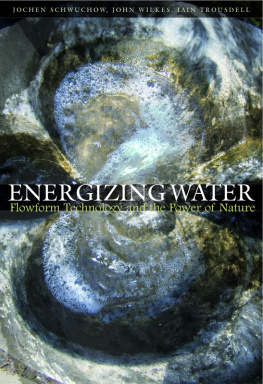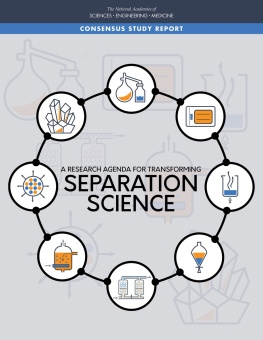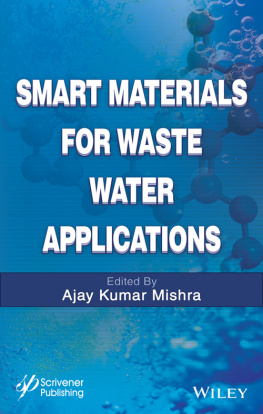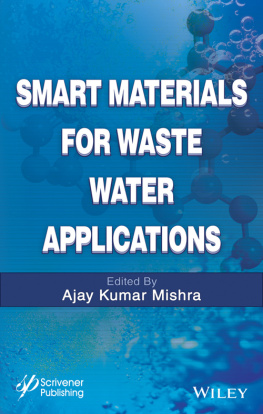
JOCHEN SCHWUCHOW carried out research on gravity responses in plants between 1986 and 2003 at the universities of Mainz and Freiburg in Germany and Ohio State in Columbus, USA. Since 2003 he has worked as a freelance research and teaching consultant at Emerson College in Forest Row, England.

JOHN WILKES originated the Flowform Method in 1970 following periods of work with George Adams and Theodor Schwenk during the 1950s and 60s. After some years further research, project work was begun which led to installations in many countries and the involvement of an increasing number of colleagues. In 2002 an Institute was built at Emerson College providing more adequate space for research into the qualitative effects of rhythmic movement on water.

IAIN TROUSDELL worked with John Wilkes and Nigel Wells from 1976 until the end of 1978 in the early Flowform development phase in England, before returning to New Zealand to pioneer Flowform activities in the Pacific region. He is director of the Healing Water Institute in NZ, and leads a group that is scaling up the supply of Flowform technology internationally.

ENERGIZING WATER
Flowform Technology and the Power of Nature
Jochen Schwuchow, John Wilkes, Iain Trousdell
Sophia Books
Sophia Books
Hillside House, The Square
Forest Row, RH18 5ES
www.rudolfstemerpress.com
Published by Sophia Books 2010
An imprint of Rudolf Sterner Press
Healing Water Institute (UK) and Healing Water Institute (NZ), 2010
The moral rights of the authors have been asserted under the Copyright, Designs and Patents Act, 1988
All rights reserved. No part of this publication may be reproduced, stored in a retrieval system, or transmitted, in any form or by any means, electronic, mechanical, photocopying or otherwise, without the prior permission of the publishers
A catalogue record for this book is available from the British Library
ISBN 978 1 85584 355 4
Cover photo by S.E. Gulbekian. Cover layout by Andrew Morgan Design
Typeset by DP Photosetting, Neath, West Glamorgan
Dedicated to water and its life-supporting capacities
CONTENTS
INTRODUCTION
The noblest of the elements is water.
Pindar (518-438 BC )
This book, a collation of 40 years of research into Flowform eco-technology and its effects on water, is published at a time when the poor quality and availability of fresh water worldwide is becoming generally accepted as an urgent global issue whose importance is on a par with global warming.
Global thirst is a vital issue now for about two billion people, who have to struggle daily to find decent water for drinking, cooking and washing.
As long ago as 1970, when John Wilkes invented his Flowform technology, water quality was a major issue in industrialized countries. Since then the added burden on water has continually increased, and humanitys response has as yet fallen far short of what is needed.
The work of the Healing Water Institute is to invent, develop and research technologies based on natures own perfect methods in order to increase waters capacity to support life. This technology is of course also practically applied and installed, and has already been used in over 2500 projects in some 50 countries.
The other major aspect of our work is to educate as many people as possible about waters fascinating, creative secrets so that we all understand the vital nature of this wonderful element. Unless we profoundly appreciate it, how can we be moved to change things to help it? When we help water we are helping ourselves, and all of nature.
The Flowform work has been carried out by a relatively small number of colleagues around the world who have seen the practical value of creating designs that re-energize human-captured water with heart rhythms and the dynamics of mountain cascades, before putting it back to work in our industrial, agricultural and domestic situations.
Presently humanity captures drinkable water from 65% of the worlds natural fresh-water sources. UNESCO tells us that within 35 years this will rise to 90%. So what does this mean?
With our deplorable record of polluting this water, chemically, organically and energetically, it means that the worlds water will no longer be able to support all life on this planet, as it has done previously through aeons.
We pollute the seas through discharge from our farms, factories and not least from our homes. It is of vital importance that we change the way we think, for our polluting practices all stem from the way we work, or dont work, with nature. And these practices all originate from our thoughts, and lack of understanding.
The Flowform invention is a prime example of a new way of thinking, a new paradigm of inventive, living thinking, where practical solutions are developed by studying natures subtle metamorphic and rhythmic processes. Such study has led to this effective Flowform method of water treatment - which is actually natures own method. To be more accurate, the work combines two of natures best-known rejuvenation methods - the active vitality of the mountain stream and the rhythmic pulse of nature in all living things.
This aspect of the living pulse may seem somewhat non-scientific to some, but again this is a paradigm issue, and thus one of human thinking. Rhythm exists wherever there is life, even when there is no pulsing heart. Water is the carrier of these subtle and essential rhythms, mediating the creative forces continually at work throughout nature. Life without rhythm is actually death.
When water is removed from its natural context and treated in a purely mechanical and chemical manner, its capacity to support life is reduced. Nature has known what it is doing, so to speak, and unless we learn quickly and profoundly from it we will fail to be in harmony with it. And nature, as we are discovering, is far stronger than humanity wherever disharmony arises.
Flowform technology offers the chance to return captured and spoiled water to its natural context, invoking natures own wisdom even in an agricultural, industrial and domestic environment.
Much more research is needed into this whole area, and recent decades have only seen the start of what might develop.
Since the turn of the new century we find that our work with rhythmic and surface influences on water is meeting with greater understanding and that new, exciting opportunities are developing. University water science of the last 15 years, influenced by quantum physics, has also entered the same theoretical fields that we have been exploring for decades. Based on Rudolf Steiners scientific suggestions in the 1920s, the present Healing Water Institutes work draws on investigations by highly qualified scientists such as Ehrenfried Pfeiffer, Theodor Schwenk, Eugen and Lily Kolisko, and George Adams. John Wilkes studied under the latter and became assistant in his water movement research.
John Wilkes, Nick Thomas and Nigel Wells first established the Healing Water Institute in 1975. It is now registered as a Charitable Trust (no. 1133741), and is based at Emerson Village, Sussex, England, with sister institutes in New Zealand and the USA, and other scientific associations developing elsewhere.
Next page











